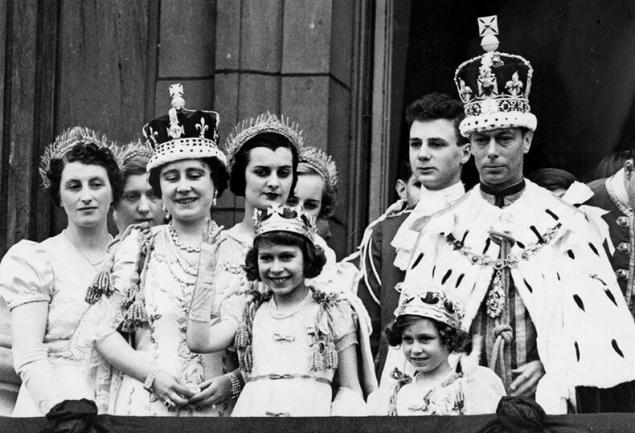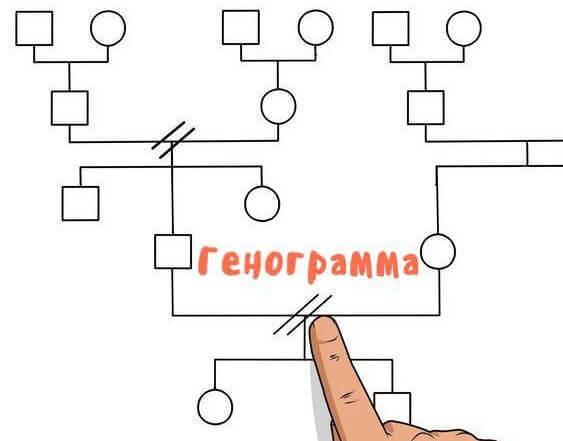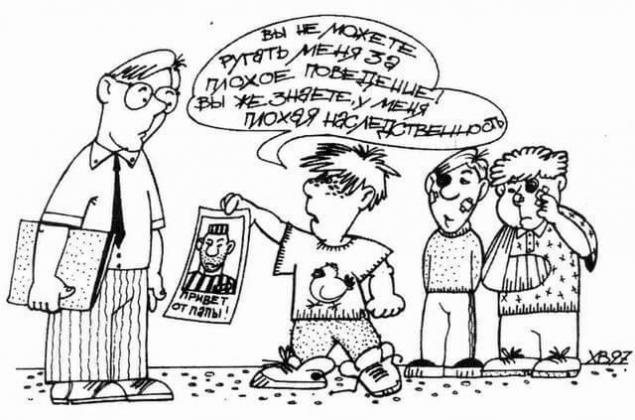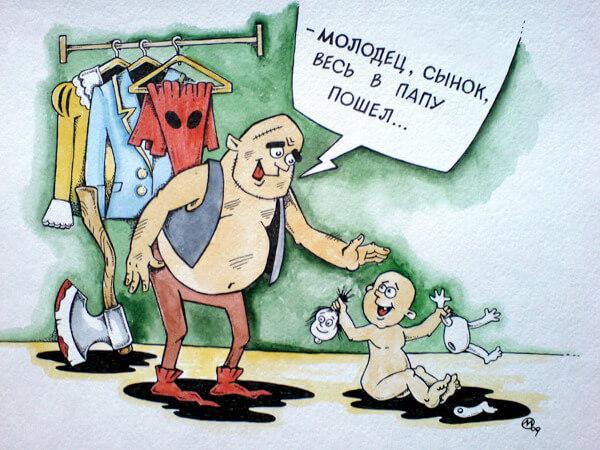783
Family history, and you genogram: 7 hidden influences
Family history, and you genogram: 7 hidden influences. You know my love of history in General and the pedigree drawing in particular. Continue to shock relatives after compiling a pedigree extending it to the genogram. It is a useful tool that can give a lot of information about yourself and your actions. What is genogram and how to make?
First of all, I want to draw your attention to the fact that the construction of a genogram is an additional method with a weak evidence base. The results vary and are highly inaccurate. And this method is primarily valuable as a projection of the experience of the family on their experience.
The man is very plastic and your health and well-being primarily depend on yourself, not from the ancestors. To write off all their problems – wrong. Yes, family history is not only in negative but also in positive direction. OK? And now to business!

Building a genogram is a method that is often used in the field of family therapy. You can aim the study of the relationships within the family. Noting on the diagram the distribution of roles in the family from generation to generation (who is the head of the family, who is the earner of livelihood, who manages a budget who are dependent), the peculiarities of the temperaments of family members, or phobias, a tendency to depression, methods of communication, mutual likes or dislikes, you will identify interesting patterns – for example, the tendency of younger children in the family to fall into seasonal depression. Or traditional taciturnity senior family men, "patriarchs".
Good material for study and introduction to genogram – family tradition. As marriages conclude, as have children to bring up and educate like patients treated, a list of family celebrations, the habit of congratulating cards or lack thereof... Professional preferences, skill-the inability to make a career...
Genogram is a graphical representation of family relationships spanning multiple generations, usually 3-4 generation. CEl it — to show relationships and patterns of behavior passed between generations, as well as significant and hidden figures and events such as violent death, abortion, suicide, disease, professional successes and failures, as well as intrafamily dyads and triangles.
Genogram allows the therapist to vzgljanut on family history as to the transmission system of behavior patterns in the family system in modern povedencheskie samples. To find those "skelety in closets" or artifacts, behavior and relationship which unconsciously affect the behavior and relations of the client.

Family history provides an opportunity to learn certain patterns of behavior and patterns of interaction that are repeated from generation to generation. The study of this parameter was begun by M. Bowen, who managed to show that from generation to generation in your family history there is an accumulation of dysfunctional patterns and this leads to pathology of family members.
Family history can be reflected by using a genogram. There are certain laws that can be seen with the help of a genogram, for example, genogram you can make the assumption about the choice of marriage partner. Often young people looking for a relationship that they were trying to build with the parent of the opposite sex, but I couldn't.
Engaging in the construction of the genogram, you can uncover family secrets and discover one or more relatives, which in the family for a long time no one mentioned. Genogram is consistent with the theory of M. Bowen of "inter-generational (inter-generational) process of transmission".
Data genogram help to identify the hidden causes of fear, depression, tendency to build relationships based on the triangle, etc. the fact that you can act what you don't know. Pathogenic neprogovarivaemom harmful not so much what keeps the baby a different kind of ignorance, as the fact that through it is an irresistible anxiety of parents about what they hide.

In psychotherapy genogram also used as a projective technique (F. Kaslow). In this case, the client is asked to draw genograms his family (not family of origin). F. Kaslow calls genogram projective tool for the assessment of the family particular person, giving a lot of tips to define goals and process of psychotherapy
We are all links in the chain of generations, and sometimes we have to her own surprise, "to pay the debts" of the past of our ancestors. This kind of "invisible loyalty to the family" pushes us to unconscious repetition of pleasant situations or unfortunate events.
We are less free than believe, but we have the opportunity to win their freedom and to avoid fatal repetition in our family history, understand the complex intricacies in his own family.
Method of genogram can be used to analyze intergenerational transmission of models of certain types of family behaviour, in particular parental and conjugal. You will be able to track recurring events, the strategy of behavior, different trends in the relationships (e.g., duration of marriage, etc.). Using a method you can see which factors affect family-run scenario. Let's look at some of the concepts of the genogram.
1. Role expectations and imposed roles.
"Invisible loyalty to the family" makes many of us to live a life inherited from the ancestors. Every family has traditions, albeit unofficial. Every family has role expectations. Suppose in one family accepted all financial responsibility for younger children and parents to assign to an older child. In another at least one offspring must receive a medical training, because that "all" doctors.
Many fathers and authoritarian mothers hold with their sons or daughters, saying, "I've sacrificed for you, so you owe me". Unfortunately, many young people are involved in this game and not "isolated" from family (according to the words of Murray Bowen) do not impose a distance between himself and his family. They do not become adults because they feel themselves bound by duties.
The child either accepts the imposed role, or becomes an outcast in his own family. To rebel, to go against the ancestors may not be many. They are labeled "ungrateful" or "unlucky". They say: "in our family, so it is not accepted".
Adults often tell the child: "you look just like your mother!" "it is very similar to grandpa Pete" or "frivolous uncle Sasha"... Fear that the child will repeat the fate of the family is not the most popular character, often justified. Growing up, he played the role imposed. Sometimes the child aims to fill the mountain after the death of someone from the household. Newborn name name of the departed, and make his "Deputy".

2. Double coercion.
The so-called group Palo Alto meaningful connected with the hypothesis of the "double bonds", "dual enforcement" (double bind) is a serious violation of communication in the family, when expressed more than conflicting messages. They are structured in such a way that the words are approved that may be one thing, but in a different way, for example.with the help of body language, it is argued more.
Thus, the two statements are mutually excluded or blocked. This so-called "double link" "double the message, double coercion." According to this, if the message is a command, to obey, he should not obey.
In addition, it is forbidden to say that orders for the confusing, contradictory and "necessarily". A man caught in a situation of "dual enforcement" risks, thus, to be punished (or felt the VAT itself is to blame) when sees things "correctly" and to be in the family "evil" or "insane" ("sick at the behest of others") that showed the existing discrepancy (the disso nance) between what he sees (perceives) and what he "would have" to see or experience.
3. Family myth
In the family system mental functions of one family member cause mental functions of another member; there is a constant mutual regulation, and the rules for the functioning of a family system are both explicit and implicit, but mainly implicit.
And family members don't realize it. "In our family so it is accepted" — that is, the basic rules are like in themselves and it is believed that they do not require explanation.
The family myth is revealed through the pattern of functioning: some people act in life according to the patterns that I would consider "unhealthy" (I don't know how else to regard infidelity, a vendetta, murder, healthy or unhealthy protection of "family honour").
Such rituals form a set, some integrity, Gestalt relations, unconsciously structured and involving all family members. Each of these rituals contributes to "balancing the family accounts" when the position or "exploiting setup" may or may not be balanced "setting on the bounty".

4. Family secret
Among generations keep records of debts of a "family account": the next generation has a debt to previous, and you need to repay it transgeneration cascading of their children.
If in the generations of accumulated debt and injustice, a new member of the family at birth is loaded with heavy inheritance. R. Kayes draws attention to the role of memory, individual and collective, through which there is a history of generations and the possible transfer between generations.
Thus, the transmission is a historical basis, linking generations. When the group, like personality, has a tendency to eliminate from memory the painful things, to reject what may be a threat to the group as a whole and for associations within it. Such content is subjected to displacement, denial, turning to the secret.
A secret is information that is forbidden to know, to reveal that you need to hide. If he reveals, can disrupt the stability of the family system. But the secret is passed, or rather, the ignorance is passed, the ban on the knowledge and knowledge of ignorance. Researchers compare the transmission of the secret from a black bottle, passed down from generation to generation, which should take care of, but you can't open — stored threat information.
S. Tisseron describes in detail the impact of the secret on the psyche of the child. All the family secrets, no matter how great may have been the intentions behind it, is always perceived by the child as abuse. The violence that he will never forget, which hangs heavily over the whole of his psychic life and a ricochet effect on his professional, romantic and social life.
Even if parents believe that children can not learn about the secret last feel his presence, because the secret is not only transmitted verbally. He "x-rayed" through the tone of his media, his gestures, the use of inappropriate words, and even using surrounding objects. The children, feeling a painful splitting of the parents make great efforts to make parents believe that they do not know.

5. Syndrome ancestors.
Syndrome ancestors — occurring in the same family for several generations, the coincidence of dates of important events, recurrence of circumstances of life and death, as well as the transfer of "inherited" outstanding family debt. The effect of the syndrome of the ancestors is associated with the "unconscious" of the family, which is invisibly present in the life of any person, from the moment of conception until death.
How it works? While still in "project", inside the mother, the child already becomes the object of expectations of your family: who will grow the child, whose hopes he will justify his appearance in the light, etc. it doesn't Matter, expressed the expectations of the relatives aloud in or implied by "default". It is important that they unwittingly form a "scenario of the past" the future life of the child. A family secret is always only increases the likelihood that children will repeat the negative experience or the plight of the family members lived previously.
WithAmaya common form of transmission are largely based on verbal communication. And if from childhood the girl saw the mother, grandmother (and grandmother too) lived according to the formula — the "kitchen-husband-children", it is likely that its main asset is: the Tefal pan, vacuum cleaner, a couple of TV shows, homework in mathematics and Russian and "eternal" hope that still today, "cute" would buy her flowers. And it is unlikely for her professional fulfillment is a priority.
To recognize the signals of direct transmission, it is sufficient to perform the repeat of a phrase your mother or grandmother. As is most often named as the child a child — "Ah, my beauty!" (programming extroversive style of behavior), "Oh, my girl!" (bookmark the importance of the intellectual features), "you are our first child and pet!" (programming in a leadership position) — etc.
Very often the evaluation and the expectations of parents can radically diverge from the true personality characteristics of the child. In addition, would is often pronounced something like "in our family it is not accepted to get married before twenty-five years" or "we — knowledge workers, never in our family, there will be actors and other comedians"...
6. Transgenerational transfer.
It takes a few (sometimes very distant from each other) generations and is based on the non-verbal language. To understand the mechanism of transgenerational transmission, it is necessary to grasp the essence of non-verbal family settings. For example, you may not know anything about his great-grandmother, because neither your mother nor grandmother never anything about it spoke.
But the subconscious mind is much more attentive to you, it does not miss a single gesture-action, indirectly issuing a connection between any event and your relative. For example, my great-grandmother was widowed at age 31, a year after the birth of a child. And somehow she was the cause of the death of her husband and never married again. Of course, the details of the tragedy in the family ignored. And even your grandmother may not be aware of what happened to her father. But exactly one year after the birth of your mother she's divorcing her husband. And never getting married.
Your mother in turn loses her husband — your father. Will there be unexpected the fact that you still have not found family happiness or had experience of a failed relationship?The installation of the ancestors may be different. But no matter how they sounded, always cause a person a high degree of confidence. After all, we hear them from early childhood and most important for us.
This is especially true when parents and previous generations, had in his life serious trauma; this information will be passed on to descendants. If this event was mentally processed, is symbolized, inscribed into the individual memory of the experience received the status of the past, memories, the descendant is not only transmitted the contents of the traumatic experience, but the ways of mental processing and coping with it that affects the individual development of the child.
7. Effect of strong words (self-fulfilling prophecy)
Not believing in the curse, one can wonder about the effect of strong words to accompany strong emotion, especially coming from authority figures — a priest, a parent, a teacher. It is because of the unconscious nature of the impact of what is being said or predicted, I don't trust astrology, reading cards, reading the lines on the hand, clairvoyance, because nobody knows whether you have implemented sometimes foretold misfortune because of the spoken strong effect, which in the minds of people leads to failure, death, accident and makes, thus, their possible or anticipated, acting thus on the change of body — space — time — the future (as it brings the "automatic accomplishment of predictions" and would create the stress of prophecy).
That may be the evil eye, familiar to us in numerous tales, legends, stories about wizards and vicissitudes of life. But negative predictions of stress may occur, in a similar way can improve the situation with a favorable prediction and positive view of..."
Self-fulfilling prophecy is a prediction that directly or indirectly affect reality in a way that inevitably turns out to be true. A prediction that looks true but actually is not, can greatly influence the behavior of people (for example, through fear or because of feelings of logical contradictions) in such a way that their subsequent actions can lead to the fulfillment of the prediction.

Different genogram
You can make a genogram that traces the transmission and certain patterns of response.
Genogram, focused on feelings, might help to uncover the reasons for those decisions and beliefs. It can be used for collecting significant information in General about feelings in the family, and its completion may require several sessions. This genogram may include answers to the following questions:
This equally applies to socially disapprove of such feelings as anger. In this case, the parent family is a strong factor in the development of this belief system, and others. Children learn a lot about anger and conflict to the extent that what they see or unable to see in the behavior of their parents. And strength of this influence is difficult to overstate.
When a partner believes that certain feelings you can't experience or Express the use of appropriate focused genogram can help to reveal the reason why.
Genogram focused on the feeling of anger (Anger Genogram) illustrates these effects (DeMaria, Weeks, & Hof, 1999).
It gives answers to the following questions:
"Twister" — technology instant neutralization of injuries from the past
Why do we hear and understand NOT what we say
For example, for those who grow up in a family in which conflicts are manifested through distance and isolation, emotional intensity can be very uncomfortable. Similarly, those who grow up in families with volatile emotions, the more likely that it will also emotionally direct and variable.published
Author: Andrey Blueskin
P. S. And remember, only by changing their consumption — together we change the world! ©
Source: www.beloveshkin.com/2015/06/semejnaya-istoriya-genogramma-i-vy-7-skrytykh-vliyanij.html
First of all, I want to draw your attention to the fact that the construction of a genogram is an additional method with a weak evidence base. The results vary and are highly inaccurate. And this method is primarily valuable as a projection of the experience of the family on their experience.
The man is very plastic and your health and well-being primarily depend on yourself, not from the ancestors. To write off all their problems – wrong. Yes, family history is not only in negative but also in positive direction. OK? And now to business!

Building a genogram is a method that is often used in the field of family therapy. You can aim the study of the relationships within the family. Noting on the diagram the distribution of roles in the family from generation to generation (who is the head of the family, who is the earner of livelihood, who manages a budget who are dependent), the peculiarities of the temperaments of family members, or phobias, a tendency to depression, methods of communication, mutual likes or dislikes, you will identify interesting patterns – for example, the tendency of younger children in the family to fall into seasonal depression. Or traditional taciturnity senior family men, "patriarchs".
Good material for study and introduction to genogram – family tradition. As marriages conclude, as have children to bring up and educate like patients treated, a list of family celebrations, the habit of congratulating cards or lack thereof... Professional preferences, skill-the inability to make a career...
Genogram is a graphical representation of family relationships spanning multiple generations, usually 3-4 generation. CEl it — to show relationships and patterns of behavior passed between generations, as well as significant and hidden figures and events such as violent death, abortion, suicide, disease, professional successes and failures, as well as intrafamily dyads and triangles.
Genogram allows the therapist to vzgljanut on family history as to the transmission system of behavior patterns in the family system in modern povedencheskie samples. To find those "skelety in closets" or artifacts, behavior and relationship which unconsciously affect the behavior and relations of the client.

Family history provides an opportunity to learn certain patterns of behavior and patterns of interaction that are repeated from generation to generation. The study of this parameter was begun by M. Bowen, who managed to show that from generation to generation in your family history there is an accumulation of dysfunctional patterns and this leads to pathology of family members.
Family history can be reflected by using a genogram. There are certain laws that can be seen with the help of a genogram, for example, genogram you can make the assumption about the choice of marriage partner. Often young people looking for a relationship that they were trying to build with the parent of the opposite sex, but I couldn't.
Engaging in the construction of the genogram, you can uncover family secrets and discover one or more relatives, which in the family for a long time no one mentioned. Genogram is consistent with the theory of M. Bowen of "inter-generational (inter-generational) process of transmission".
Data genogram help to identify the hidden causes of fear, depression, tendency to build relationships based on the triangle, etc. the fact that you can act what you don't know. Pathogenic neprogovarivaemom harmful not so much what keeps the baby a different kind of ignorance, as the fact that through it is an irresistible anxiety of parents about what they hide.

In psychotherapy genogram also used as a projective technique (F. Kaslow). In this case, the client is asked to draw genograms his family (not family of origin). F. Kaslow calls genogram projective tool for the assessment of the family particular person, giving a lot of tips to define goals and process of psychotherapy
We are all links in the chain of generations, and sometimes we have to her own surprise, "to pay the debts" of the past of our ancestors. This kind of "invisible loyalty to the family" pushes us to unconscious repetition of pleasant situations or unfortunate events.
We are less free than believe, but we have the opportunity to win their freedom and to avoid fatal repetition in our family history, understand the complex intricacies in his own family.
Method of genogram can be used to analyze intergenerational transmission of models of certain types of family behaviour, in particular parental and conjugal. You will be able to track recurring events, the strategy of behavior, different trends in the relationships (e.g., duration of marriage, etc.). Using a method you can see which factors affect family-run scenario. Let's look at some of the concepts of the genogram.
1. Role expectations and imposed roles.
"Invisible loyalty to the family" makes many of us to live a life inherited from the ancestors. Every family has traditions, albeit unofficial. Every family has role expectations. Suppose in one family accepted all financial responsibility for younger children and parents to assign to an older child. In another at least one offspring must receive a medical training, because that "all" doctors.
Many fathers and authoritarian mothers hold with their sons or daughters, saying, "I've sacrificed for you, so you owe me". Unfortunately, many young people are involved in this game and not "isolated" from family (according to the words of Murray Bowen) do not impose a distance between himself and his family. They do not become adults because they feel themselves bound by duties.
The child either accepts the imposed role, or becomes an outcast in his own family. To rebel, to go against the ancestors may not be many. They are labeled "ungrateful" or "unlucky". They say: "in our family, so it is not accepted".
Adults often tell the child: "you look just like your mother!" "it is very similar to grandpa Pete" or "frivolous uncle Sasha"... Fear that the child will repeat the fate of the family is not the most popular character, often justified. Growing up, he played the role imposed. Sometimes the child aims to fill the mountain after the death of someone from the household. Newborn name name of the departed, and make his "Deputy".

2. Double coercion.
The so-called group Palo Alto meaningful connected with the hypothesis of the "double bonds", "dual enforcement" (double bind) is a serious violation of communication in the family, when expressed more than conflicting messages. They are structured in such a way that the words are approved that may be one thing, but in a different way, for example.with the help of body language, it is argued more.
Thus, the two statements are mutually excluded or blocked. This so-called "double link" "double the message, double coercion." According to this, if the message is a command, to obey, he should not obey.
In addition, it is forbidden to say that orders for the confusing, contradictory and "necessarily". A man caught in a situation of "dual enforcement" risks, thus, to be punished (or felt the VAT itself is to blame) when sees things "correctly" and to be in the family "evil" or "insane" ("sick at the behest of others") that showed the existing discrepancy (the disso nance) between what he sees (perceives) and what he "would have" to see or experience.
3. Family myth
In the family system mental functions of one family member cause mental functions of another member; there is a constant mutual regulation, and the rules for the functioning of a family system are both explicit and implicit, but mainly implicit.
And family members don't realize it. "In our family so it is accepted" — that is, the basic rules are like in themselves and it is believed that they do not require explanation.
The family myth is revealed through the pattern of functioning: some people act in life according to the patterns that I would consider "unhealthy" (I don't know how else to regard infidelity, a vendetta, murder, healthy or unhealthy protection of "family honour").
Such rituals form a set, some integrity, Gestalt relations, unconsciously structured and involving all family members. Each of these rituals contributes to "balancing the family accounts" when the position or "exploiting setup" may or may not be balanced "setting on the bounty".

4. Family secret
Among generations keep records of debts of a "family account": the next generation has a debt to previous, and you need to repay it transgeneration cascading of their children.
If in the generations of accumulated debt and injustice, a new member of the family at birth is loaded with heavy inheritance. R. Kayes draws attention to the role of memory, individual and collective, through which there is a history of generations and the possible transfer between generations.
Thus, the transmission is a historical basis, linking generations. When the group, like personality, has a tendency to eliminate from memory the painful things, to reject what may be a threat to the group as a whole and for associations within it. Such content is subjected to displacement, denial, turning to the secret.
A secret is information that is forbidden to know, to reveal that you need to hide. If he reveals, can disrupt the stability of the family system. But the secret is passed, or rather, the ignorance is passed, the ban on the knowledge and knowledge of ignorance. Researchers compare the transmission of the secret from a black bottle, passed down from generation to generation, which should take care of, but you can't open — stored threat information.
S. Tisseron describes in detail the impact of the secret on the psyche of the child. All the family secrets, no matter how great may have been the intentions behind it, is always perceived by the child as abuse. The violence that he will never forget, which hangs heavily over the whole of his psychic life and a ricochet effect on his professional, romantic and social life.
Even if parents believe that children can not learn about the secret last feel his presence, because the secret is not only transmitted verbally. He "x-rayed" through the tone of his media, his gestures, the use of inappropriate words, and even using surrounding objects. The children, feeling a painful splitting of the parents make great efforts to make parents believe that they do not know.

5. Syndrome ancestors.
Syndrome ancestors — occurring in the same family for several generations, the coincidence of dates of important events, recurrence of circumstances of life and death, as well as the transfer of "inherited" outstanding family debt. The effect of the syndrome of the ancestors is associated with the "unconscious" of the family, which is invisibly present in the life of any person, from the moment of conception until death.
How it works? While still in "project", inside the mother, the child already becomes the object of expectations of your family: who will grow the child, whose hopes he will justify his appearance in the light, etc. it doesn't Matter, expressed the expectations of the relatives aloud in or implied by "default". It is important that they unwittingly form a "scenario of the past" the future life of the child. A family secret is always only increases the likelihood that children will repeat the negative experience or the plight of the family members lived previously.
WithAmaya common form of transmission are largely based on verbal communication. And if from childhood the girl saw the mother, grandmother (and grandmother too) lived according to the formula — the "kitchen-husband-children", it is likely that its main asset is: the Tefal pan, vacuum cleaner, a couple of TV shows, homework in mathematics and Russian and "eternal" hope that still today, "cute" would buy her flowers. And it is unlikely for her professional fulfillment is a priority.
To recognize the signals of direct transmission, it is sufficient to perform the repeat of a phrase your mother or grandmother. As is most often named as the child a child — "Ah, my beauty!" (programming extroversive style of behavior), "Oh, my girl!" (bookmark the importance of the intellectual features), "you are our first child and pet!" (programming in a leadership position) — etc.
Very often the evaluation and the expectations of parents can radically diverge from the true personality characteristics of the child. In addition, would is often pronounced something like "in our family it is not accepted to get married before twenty-five years" or "we — knowledge workers, never in our family, there will be actors and other comedians"...
6. Transgenerational transfer.
It takes a few (sometimes very distant from each other) generations and is based on the non-verbal language. To understand the mechanism of transgenerational transmission, it is necessary to grasp the essence of non-verbal family settings. For example, you may not know anything about his great-grandmother, because neither your mother nor grandmother never anything about it spoke.
But the subconscious mind is much more attentive to you, it does not miss a single gesture-action, indirectly issuing a connection between any event and your relative. For example, my great-grandmother was widowed at age 31, a year after the birth of a child. And somehow she was the cause of the death of her husband and never married again. Of course, the details of the tragedy in the family ignored. And even your grandmother may not be aware of what happened to her father. But exactly one year after the birth of your mother she's divorcing her husband. And never getting married.
Your mother in turn loses her husband — your father. Will there be unexpected the fact that you still have not found family happiness or had experience of a failed relationship?The installation of the ancestors may be different. But no matter how they sounded, always cause a person a high degree of confidence. After all, we hear them from early childhood and most important for us.
This is especially true when parents and previous generations, had in his life serious trauma; this information will be passed on to descendants. If this event was mentally processed, is symbolized, inscribed into the individual memory of the experience received the status of the past, memories, the descendant is not only transmitted the contents of the traumatic experience, but the ways of mental processing and coping with it that affects the individual development of the child.
7. Effect of strong words (self-fulfilling prophecy)
Not believing in the curse, one can wonder about the effect of strong words to accompany strong emotion, especially coming from authority figures — a priest, a parent, a teacher. It is because of the unconscious nature of the impact of what is being said or predicted, I don't trust astrology, reading cards, reading the lines on the hand, clairvoyance, because nobody knows whether you have implemented sometimes foretold misfortune because of the spoken strong effect, which in the minds of people leads to failure, death, accident and makes, thus, their possible or anticipated, acting thus on the change of body — space — time — the future (as it brings the "automatic accomplishment of predictions" and would create the stress of prophecy).
That may be the evil eye, familiar to us in numerous tales, legends, stories about wizards and vicissitudes of life. But negative predictions of stress may occur, in a similar way can improve the situation with a favorable prediction and positive view of..."
Self-fulfilling prophecy is a prediction that directly or indirectly affect reality in a way that inevitably turns out to be true. A prediction that looks true but actually is not, can greatly influence the behavior of people (for example, through fear or because of feelings of logical contradictions) in such a way that their subsequent actions can lead to the fulfillment of the prediction.

Different genogram
You can make a genogram that traces the transmission and certain patterns of response.
Genogram, focused on feelings, might help to uncover the reasons for those decisions and beliefs. It can be used for collecting significant information in General about feelings in the family, and its completion may require several sessions. This genogram may include answers to the following questions:
- What were the predominant feelings of each member of Your family?
- What a feeling, the mood was prevailing in your family as a whole? Who created this mood who was responsible for it?
- What feelings were most common and which is the strongest?
- The expression of some feelings in the family was banned? If taboo feeling was manifested, what should the punishment?
- What happened when the unsayable feelings in the family?
- Who in the family knew, and who didn't know that you made others feel?
- What happened to you when You expressed the forbidden feeling or feelings?
- How have You adapted to life, experiencing such, so to say, unwanted emotions?
- Did the others give you their opinion in how and what You should feel?
- Did You ever like someone lost control over his or her feelings? What happened then? Suffered anyone specifically? How?
- If Your family have used physical punishment, what feelings were expressed by the parents? But what feelings were allowed to children?
- Do You experience feelings that can't explain, but which are close to the feelings that You have experienced in the past?
This equally applies to socially disapprove of such feelings as anger. In this case, the parent family is a strong factor in the development of this belief system, and others. Children learn a lot about anger and conflict to the extent that what they see or unable to see in the behavior of their parents. And strength of this influence is difficult to overstate.
When a partner believes that certain feelings you can't experience or Express the use of appropriate focused genogram can help to reveal the reason why.
Genogram focused on the feeling of anger (Anger Genogram) illustrates these effects (DeMaria, Weeks, & Hof, 1999).
It gives answers to the following questions:
- What, in your opinion, is anger?
- When You are angry, what does that mean?
- When You're angry with your spouse (partner), what does that mean?
- When the husband is angry, what does that mean?
- When the spouse is mad at You, what does that mean?
- How do You react to anger your spouse?
- How do You react to your own anger?
- As You give to your spouse that You are angry?
- How long usually takes your getting angry?
- What other feelings are associated with anger?
- How Your parents treated with anger, with conflict?
- Did You ever their parents in anger, or conflict against each other?
- When one of your family members (called each) became angry, how to react to others?
- How have you adapted to the anger of each of your parents?
- When one of the parents was mad at You, what You felt and what you were doing?
- When You become angry, who listened to You, or was able to listen to? Who is not?
- As members of your family react when You became angry?
- Who was allowed and who was not allowed to be angry in your family?
- You got the best/worst memory of anger in your family?
- Injured anyone seriously in your family in a situation when someone else was angry?
"Twister" — technology instant neutralization of injuries from the past
Why do we hear and understand NOT what we say
For example, for those who grow up in a family in which conflicts are manifested through distance and isolation, emotional intensity can be very uncomfortable. Similarly, those who grow up in families with volatile emotions, the more likely that it will also emotionally direct and variable.published
Author: Andrey Blueskin
P. S. And remember, only by changing their consumption — together we change the world! ©
Source: www.beloveshkin.com/2015/06/semejnaya-istoriya-genogramma-i-vy-7-skrytykh-vliyanij.html
Buy a lottery ticket or the effect of the Ouroboros
Neuropharmacology Arvid Carlsson: Belief in God is inherent in our genes























